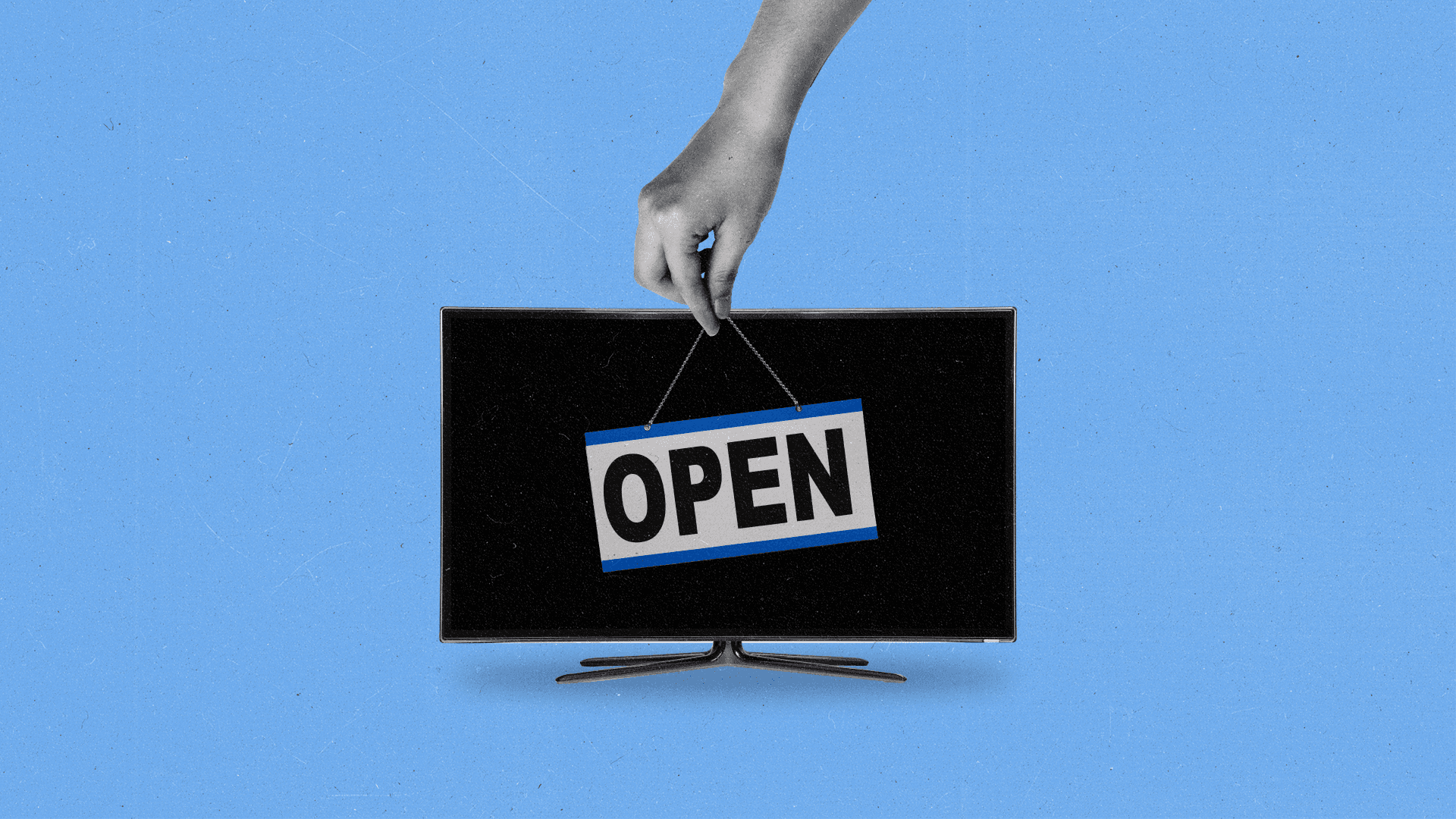Why streamers like Disney, NBCUniversal and Paramount are courting small businesses

Illustration by Reagan Hicks / Getty / Shutterstock / The Current
April 08, 2024
Streaming is opening the door for more small and local businesses to get in on the action, as the barriers to entry for video advertising come down.
Disney CEO Bob Iger revealed during the company’s latest earnings report that more than 1,000 new advertisers joined Disney+ during the first quarter, a 1,000% increase from launch in late 2022. Meanwhile, Peacock has seen a 40% increase in advertisers over the past year. And Paramount is also making it a priority to bring more small businesses onto Paramount+, with Paramount Advertising COO Steve Ellis noting that Paramount now serves thousands of advertisers.
“Premium video is the one space left in media with scale that SMBs [small-and medium-size businesses] have not really had an optimized experience for,” Ellis recently told The Current. “There is an excellent opportunity in expanding the number of advertisers we work with. It’s streaming and ad-supported streaming and that scale that allows us to even investigate that opportunity.”
With streaming comes the possibility of better measurement. New measurement tactics are driving even more development. A case in point is the expansion of the Comscore Campaign Ratings (CCR) Local, which overlays streaming data on linear TV data in 128 of Comscore’s local markets. This allows for reporting down to the person level, rather than just households, which the company believes sets this solution apart.
Early results show upwards of 33% in incremental reach over linear TV for clients leveraging the solution for connected TV (CTV) buys, according to Comscore. This all could have a huge impact on SMBs and political advertising for the U.S. election in the fall, as a bigger number of advertisers can target more precisely and optimize locally.
“Local, linear advertising and the impacts of advertising at the local level is sometimes thought of as static and slow to innovate,” Rachel Gantz, managing director of Proximic by Comscore, tells The Current. “But if you think about it, cars are bought locally, groceries are bought locally, QSR [quick-service restaurants] is bought locally. It’s a political year, votes are cast locally.”
Local and regional advertisers now can jump into streaming and target their audience efficiently, in large part thanks to programmatic advertising gaining more prominence.
“[It’s] really critical to make sure that we’re reaching audiences at the local level through good targeting tools, as well as optimizing at the local level,” Gantz says. “Even if the campaigns are being executed nationally, the importance being that they’re being optimized locally because that’s where the product is ultimately moving.”
With projections from Intuit estimating consumers would spend $125 billion at small businesses this past holiday season, a 42% jump from 2022, local dollars can make a massive impact on the economy. As Gantz puts it simply, local matters.
Programmatic power
Programmatic’s role can’t be understated here, enabling local advertisers access to marquee events they might have been shut out of before. For the first time ever, NBCUniversal is opening up programmatic access to the Olympics on Peacock. Ryan McConville, EVP of ad platforms and operations at NBCUniversal, recently told The Current that “This is going to open up the ability for small- and medium-size agencies and advertisers to access the Olympics. They’ve just never been able to do that before.”
Disney is making major strides in this arena too. The media giant is aiming to automate 75% of its advertising business by 2027, after recently hitting its goal of 50% last year.
“Automation has allowed us to increase the diversity of our advertising base, which ultimately creates a better user experience for customers and provides results for the industry,” Matt Barnes, Disney Advertising’s VP of programmatic sales, told The Current last December.
That acceleration by major media players, along with the new measurement tools available, can help to create a more accessible and easier-to-use environment for marketers, potentially driving better business results.
“If you think about the future of television advertising, it’s all going programmatic,” Gantz shares. “So, the fact that we are accelerating the tools available to make these decisions before we even get to that end stage is going to make advertisers’ lives endlessly easier for being able to get more bang for their buck.”
Political power
With 2024 a presidential election year in the U.S., Comscore’s advancements could deliver more accurate metrics during election season. CCR Local knows which people have been served linear TV political ads, giving advertisers the chance to retarget voters through digital channels. The lion’s share of political advertising, about 70%, is still done through traditional TV, so being able to measure that alongside streaming is where the melding of linear TV and CTV is magnified.
Gantz says this will give political advertisers the power to make sure their linear TV actions are informing the digital and programmatic environments. This presidential election will also be the first one in the 21st century to take place as third-party cookies for all Chrome users are being deprecated, meaning advertisers must adjust to that signal loss.
Record amounts of political spend are projected to come in this year. Overall, advertisers are forecasted to throw in $12.32 billion, a 29% increase from 2020, according to eMarketer. And digital ad spend will shatter figures from 2020, with $3.46 billion projected to be coming in, a 155% increase. CTV is expected to make up 45% of that digital spend, a 500% increase.
This level of spend makes it even more important to hit measurement targets from the outset, because make goods don’t matter within political, Gantz says. Once the election happens, there’s no making up chances to influence voters.
Subscribe to The Current
Subscribe to The Current newsletter